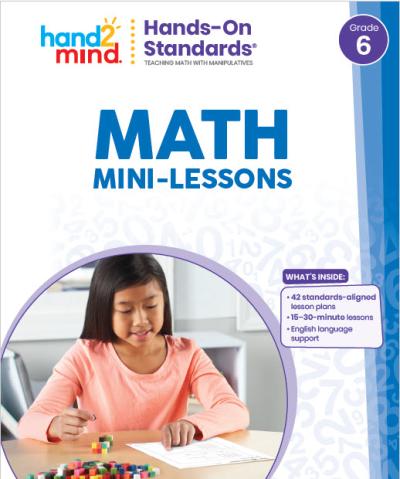Evaluation for 3.2a
Materials include explicit (direct) prompts and guidance for educators to build knowledge by activating prior knowledge, anchoring big ideas, and highlighting and connecting key patterns, features, and relationships through multiple means of representation.
The materials include direct prompts and guidance for educators to build knowledge and advice for communicating big ideas under bolded text directives, including Say and Ask, such as, "Where are these numbers on a number line? Which absolute value is greater?" The materials provide specific prompts and guidance to help students understand concepts, connect key ideas, and access prior knowledge. In "Decimal Operations," the materials guide educators to "remind students that numbers to the right of a decimal point represent a fractional part of a whole number. Ask students if they should multiply to get the greatest amount. Why or why not? Ask students if multiplying or dividing the decimals will result in a greater number." Multiple examples of this type of guidance and questioning are available in most lessons. The materials guide educators in activating prior knowledge by reviewing vocabulary previously taught in prior lessons. In "Find the Area," students review the following vocabulary words: parallelogram, perpendicular, triangle, rectangle, square, and area. Each of the five "Strand Overviews" is complete with a section titled "Language Development/Supports." The overview provides educators with specific guidance, including direct prompts and guidance stems, to help them build knowledge by highlighting and connecting key patterns, relationships, and features through multiple means of representation. In the "Try It!" activity of each lesson, the materials utilize the connection of key relationships through multiple means of representation. For example, in a "Unit Rates" lesson, students solve a problem involving unit rates. Students work with pattern blocks to represent the situation and then are asked to draw the groups they create and write their numbers as ratios and fractions. After the lesson, the "Talk About It" section prompts educators to ask students about different unit rate situations and what they have in common, anchoring the big idea of using unit rates across multiple situations. In the "More Ideas" section, students work with snap cubes to represent the number of passengers in train cars and are guided to see the ratio of passengers to vehicles. These examples help illustrate the multiple representations of unit rates, percentages, and equivalent ratios, enabling students to connect key concepts.



